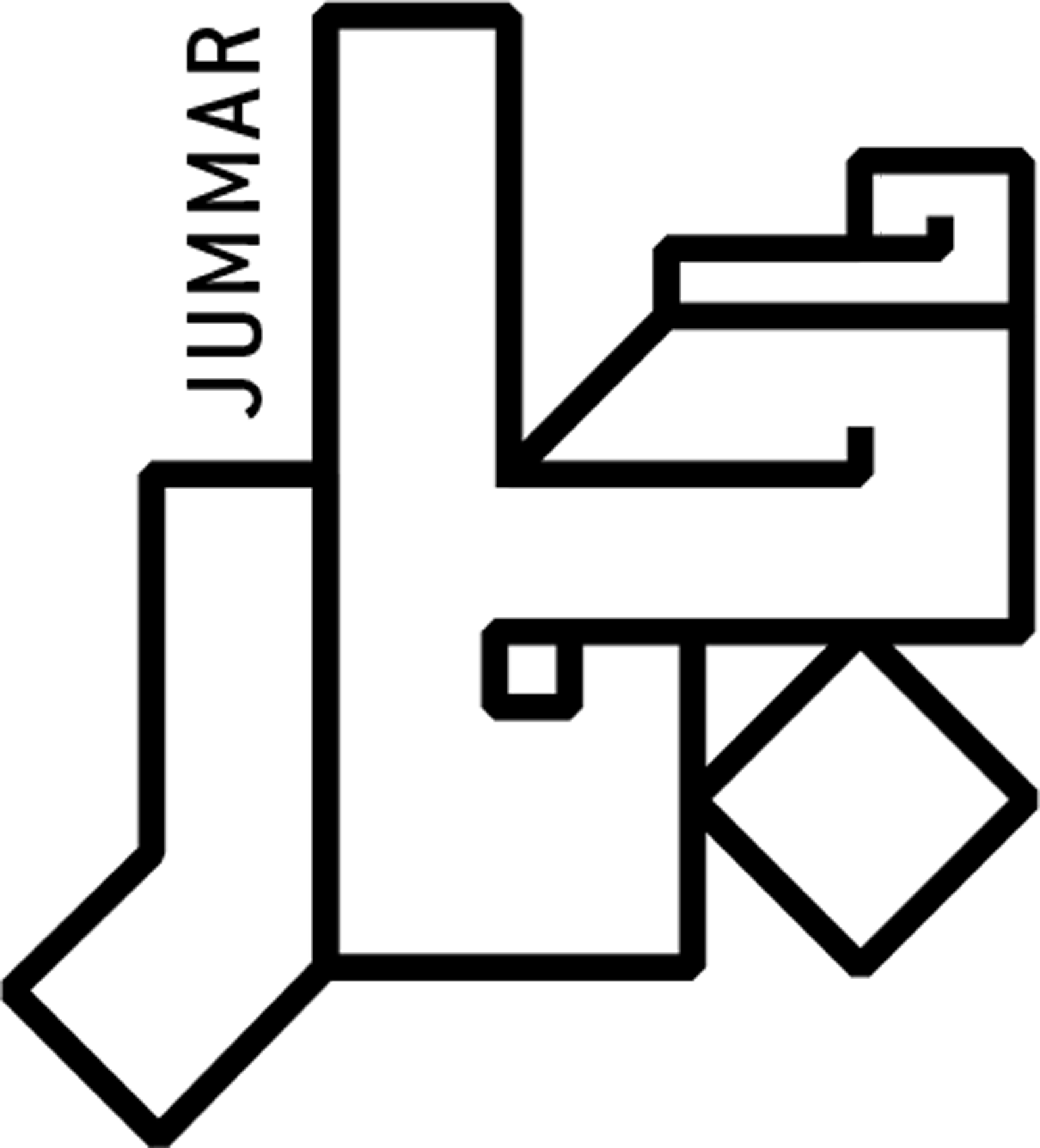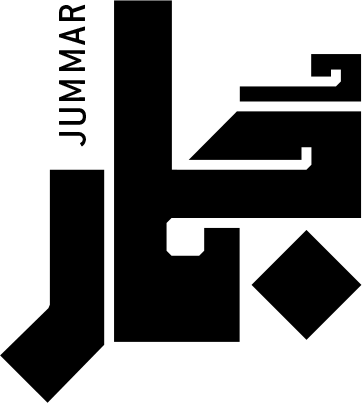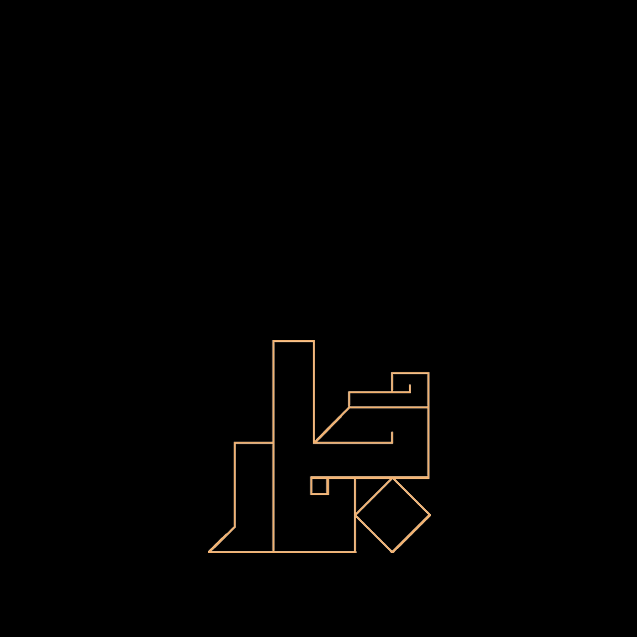Drug Storage and Incineration in Iraq: Minors Involved, Suspected “Trafficking”, and a Polluting Process
05 Apr 2023
What happens to confiscated drugs? Are they safely stored? Are the seized drugs trafficked back into the market? How is the drug incineration process carried out? Does it cause any environmental risks to humans? What were two minors doing in the warehouses of the Medico-Legal Directorate? Iraq’s numerous violations in the process of drug storage and destruction.
On the morning of 18 December 2022, a convoy of twelve trucks lined up in an unusual scene in front of the Medico-Legal Directorate building in the largest medical city in Baghdad. Portable refrigerators under maximum security and dozens of health, judicial, security, and press staff gathered to transfer a very large load of seized narcotics, which had been accumulating for twelve years, to crude incinerators in Nahrawan next to the Bismayah housing complex.
Most institutions involved in incinerating the drugs, including the Ministry of Health, confirmed that the process was carried out according to the most accurate scientific and technical specifications. However, the scene at the site was full of thick black fumes from the irregular burning pits that could not accommodate so many tons of drugs. The Ministry of Health was not part of this polluting incineration.
The trucks that set off from the centre to the far south of Baghdad in Nahrawan took hours to transport about six tons of confiscated narcotics to the Iraqi army’s shooting field inside the Bismayah military barracks. The photos and videos circulated by government agencies to document the “historic incineration” contained evidence of the inaccuracy of its procedures and revealed violations of safety protocols, in addition to minors participating in the transport and unloading processes, whom Jummar could not identify.
Drugs kept for years
Within the Medical City complex, tons of narcotic drugs confiscated by the security services since 2009 were stored in the Medico-Legal Directorate warehouses. Tons of unprotected drugs were placed in dilapidated storage facilities under precarious control.
The Ministry of Health’s Medico-Legal Directorate is the only government agency responsible for preserving, storing, and destroying narcotic drugs that are seized throughout the country. Due to the active drug trade in Iraq, including marketing and smuggling, the storage capacities of the directorate, which also function as a morgue, could not accommodate the accumulated impounded illegal drugs. As a result, it had to use its old laboratory building as storage. “The building is not suitable and lacks adequate means of protection from the hazardous seized materials”, according to a report by the Federal Audit Bureau, the highest national oversight institution that ensures work safety and financial and administrative stability in state structures.
Over three years (2014-2017), the Bureau monitored the Ministry of Health policy on drug control and addiction treatment. It found a significant shortcoming in various ministry departments that led to an increase in the spread of drugs. Security services have intensified their operations against drug dealers and users over the past two years, arresting hundreds from the trafficking network. However, major drug traffickers and heads of the network remain undetectable as if they were ghosts.
Judge Suhaib Dahham, Head of the Drug Destruction Committee and President of Al-Rusafa Court of Appeal, criticised the use of the laboratory building for storage. He said, “the building is old, dilapidated, and has been crumbling since 1941. It is unfit for storing hazardous materials such as drugs”.
Because most of the seized narcotics are considered dual-use drugs, preserving them requires the established standards of pharmaceutical storage. However, “the rooms in which narcotics were stored are dire, shambolic, unprotected, and without ventilation”, according to Mostafa Al-Hiti, Head of the Pharmacists Syndicate.
The Medico-Legal Directorate only has two small, fortified rooms in its main building for storing hazardous materials. “The storage facilities are not secured as there are not many guards to oversee them. Their doors are not secure, and their walls are high with ceilings made of iron sheets”, said an employee in the directorate who chose not to reveal his name.
As storage facilities were not sufficiently secured, questions were raised about the possibility of narcotics being smuggled from there back into the drug market. Colonel Bilal Sobhy, Media Officer of the Counter-Narcotics Directorate at the Ministry of Interior, denied this. “Nothing has been reported about smuggling or diversion of seized narcotics”, he said.
Either way, The Medico-Legal Directorate is responsible for the security of the stored materials. “Seized drugs are accurately weighed by electronic scales under the supervision of the investigating judge. They are then sent to the Medico-Legal Directorate and not the Ministry of Interior”, according to the Counter-Narcotics Directorate.
In keeping with the Narcotic Drugs and Psychotropic Substances Law, a specialised committee exists to “monitor and supervise the seizure, preservation, storage, and destruction of narcotic drugs, psychotropic substances, and chemical precursors that have been confiscated”. This committee comprises a first-class judicial magistrate and representatives of the General Secretariat of the Council of Ministries, the Ministry of Interior, the Ministry of Finance, the Directorate General of Customs, the Ministry of Health, and the General National Narcotics Control Commission.
Medico-Legal incinerator
The Medico-Legal Directorate owns a single incinerator with a capacity of 640 kilograms/hour, but it is old having been built in 1980 and uses fuel oil for operation. Thus, workers have to place narcotics into it manually. Therefore, its stacks emit toxic pollutants into the Medical City’s air – Iraq’s biggest medical complex- spreading through the crowded capital and into the sky.
The Narcotic Drugs and Psychotropic Substances Law enacted in 2017 requires that the Medico-Legal Directorate burn narcotics to destroy them effectively. However, the amount burned by the old, low-capacity incinerator used to get smaller each time. An official in the Medico-Legal Directorate who chose not to give his name told Jummar, “The incinerator cannot keep up with the large accumulated drug seizures”.
The incinerator’s efficiency, described as “unfit” by the Adviser of the Ministry of Health, Imad Abdul-Razzaq, has resulted in piles of drugs accumulating over the years. This is due to the lack of storage facilities with technical specifications corresponding to the World Health Organisation’s protocols, as well as rules governing the destruction process, under the bureaucracy of a government that did not comprehend the danger of “keeping” six tons of drugs. “We would need 200 years to destroy this amount if we used the Medico-Legal incinerator”, said Al-Hiti.
The Supreme Judicial Council proposed a fast-track destruction mechanism that would shorten judicial procedures in relation to the Medico-Legal incinerator if a court order was issued in order to avoid accumulation. “Every seized narcotic substance …, which is a variety of substances from multiple sources and are not limited to a specific governorate, is subject to a series of procedures that end with issuing the Medico-Legal report to prove that it is a narcotic substance (…) The Narcotic Law stipulates that it must be stored in the Medico-Legal Directorate, resulting in this accumulation”, explained Judge Dahham.
From accumulation to incineration
Both health and judicial officials repeatedly made statements about the size of the destroyed amount, stating that it’s “5.9 tons of narcotics without indicating their type, and sixty-one million narcotic pills, including five million Captagon pills, thirty-one thousand ampoules, nine thousand vials of dual-use drugs such as psychotropic substances, and 350 kilograms of Cocaine”. These seizures resulted in more than 15,000 lawsuits.
The process of loading, transporting, and unloading the drugs “took around eight hours, starting at mid-morning”, according to Judge Dahham, who confirmed that “the destruction process ended at five o’clock in the afternoon”. The operation of transporting, unloading, burning, and burying, however, took only five to six hours for the six tons of narcotics.
Samia Al-Naimi, an academic in Biotechnology at Al-Nahrain University, confirmed that “the burning process usually requires six to fifteen hours, depending on the type of narcotic substance”, which makes the government’s narrative questionable.
After analysing the video footage and photographic evidence obtained by Jummar and conducting mathematical calculations, the amount destroyed appeared to be sizably less than the official figures announced. Officials exaggerated the “historic achievement”, with the state TV channel devoting special coverage to the event.
Seven pits were used to destroy and bury the alleged “tons” without signs explaining the nature of those pits or indicating the danger of approaching or excavating them. Saif Al-Badr, the Ministry of Health spokesman, stressed that “technical specialists agreed on this site to be used for burning”. Selecting the site was on the recommendation of the technical department of the Ministry of Health with the agreement of the Supreme National Narcotics Control Commission and the approval of the Ministry of Defence. However, the Ministry of Environment was not consulted, despite it being the environmental reference to guarantee the safety of destruction procedures and any resulting damage.
Technical irregularities and environmental offences
According to the Ministry of Health, destroying drugs through burning in an open space does not harm the population’s health. Al-Hiti, Head of the Pharmacists Syndicate and one of the technical specialists consulted, supported the ministry’s claims, saying that “burning drugs is the correct method that does not have detrimental effects” and that the government’s decision was based on “our experiment in burning smaller samples first, which came out to be completely destroyed after examination”.
The Ministry of Health spokesman, Al-Badr, stressed that the narcotics burned in the open shooting field “were processed with chemicals to neutralise their effectiveness before the burning process”; therefore, “there is no risk from the emitted fumes”.
However, the photos and videos documenting the event showed that the destruction process did not include the neutralising of the narcotics with any chemicals before burning. The narcotics were piled in shallow pits and covered with highly flammable fuel, just like waste”.
The Pharmacists Syndicate Head defended the burning process, “it is unnecessary to follow the international protocol, which might cause more harm. Necessity is the mother of invention, and we had to do it this way”.
The government described the operation as “exemplary” and meticulously planned. However, field evidence indicated that it was improvised without planning, and pits were hastily dug when the trucks arrived and at a close distance to each other. Contrary to the standards stipulating that pits must be excavated like deep grooves with ventilation paths to allow oxygen access necessary to complete the burning process sufficiently, the excavation was random, and its depth was insufficient.
The Pharmacists Syndicate Head assured, “the burning process did not occur in one place, but in several places excavated accurately and at considerable distances, which confirms 100 percent that the destruction process was orderly and did not affect nearby areas”, he added.
Minors carrying drugs
While loading the narcotics, photos were circulated by the government showing two minors were involved in transporting the hazardous substances. Jummar could not independently identify them, but they also accompanied the convoy to the destruction site and participated in the burning process without being subjected to safety and security conditions, despite official instructions and international protocols prohibiting the participation of minors in such work.
One of the minors appeared in a separate video unloading narcotics into the burning pit in front of health and judicial officials. It seemed that no one opposed the presence of the minors.
Possible damage
Samia Al-Naimi, a Biotechnologist at Al-Nahrain University, warns of dangers of the conventional method used by the government in burning drugs, “The method is not correct. It is better it is done in electric incinerators and furnaces with high specifications and purifying filters to reduce the spread of toxic gases and emissions from the burning”. She adds, “it must be done in specific sites and within strict environmental parameters (…) This is how developed countries destroy drugs”.
Al-Naimi stresses that “the burning process must take from six to fifteen hours, depending on the type of narcotics”, in carefully prepared burning pits that are “deep and distant from the urban areas so they are not affected by toxic and dangerous fumes and gases that pollute the environment and contain health determinants that affect humans”. She stipulates that the burning process must “reach more than a thousand degrees celsius until the narcotics melt completely and thus disintegrate. Then the pits must be filled properly, and away from areas which will be subjected to future excavation, erosion, and bulldozing”.
Destroying drugs in the Bismayah camp has resulted in damage as a consequence of not complying with the minimum technical conditions of open incineration, as Al-Naimi pointed out. Her view was seconded by Haidar Moataz, a Researcher in Nanobiological Studies and Environmental Viruses at the Ministry of Oil.
“Burning tons of drugs in one day has a significant environmental impact, as it forms a black cloud of smoke that spreads with the wind and causes high air pollution, depending on the type of the drug destroyed. This toxic cloud can travel long distances depending on the speed of the wind on the day of burning”, Moataz explains.
The photos and videos showed that the burning pits were not filled according to technical specifications that guarantee soil safety and avoid future bulldozing and erosion due to weather conditions. Burying drug incineration residues near the earth’s surface causes “great future environmental problems that affect life in the surrounding region (…) The burning impact must be cleaned, and the site’s safety must be constantly ensured as it is a highly polluted area”, according to Moataz.
Read More
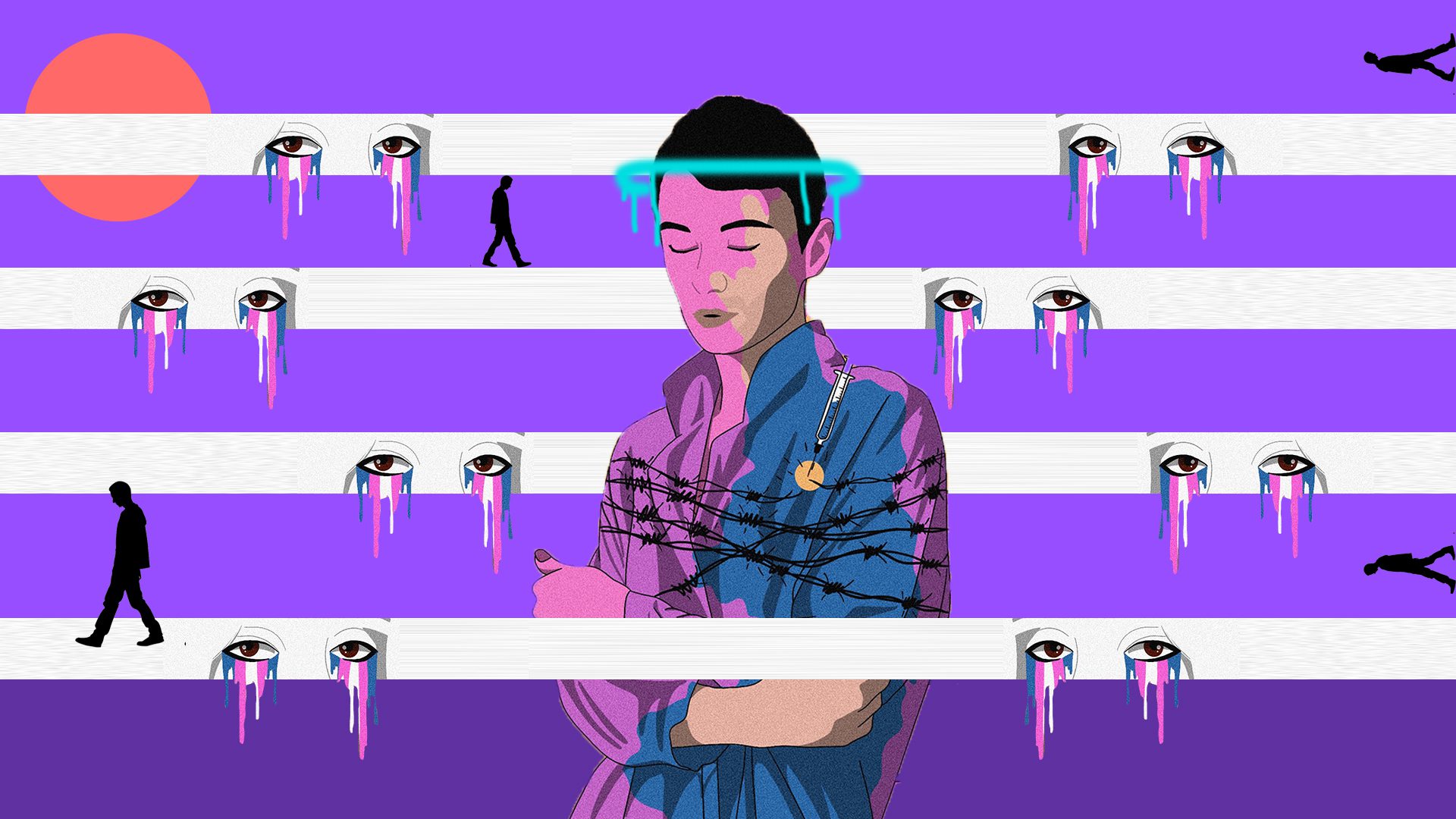
“She Brought a Fatwa from Khamenei and Al-Azhar, But It Went Nowhere”: The Struggles of Trans People in the Iraqi Health Sector
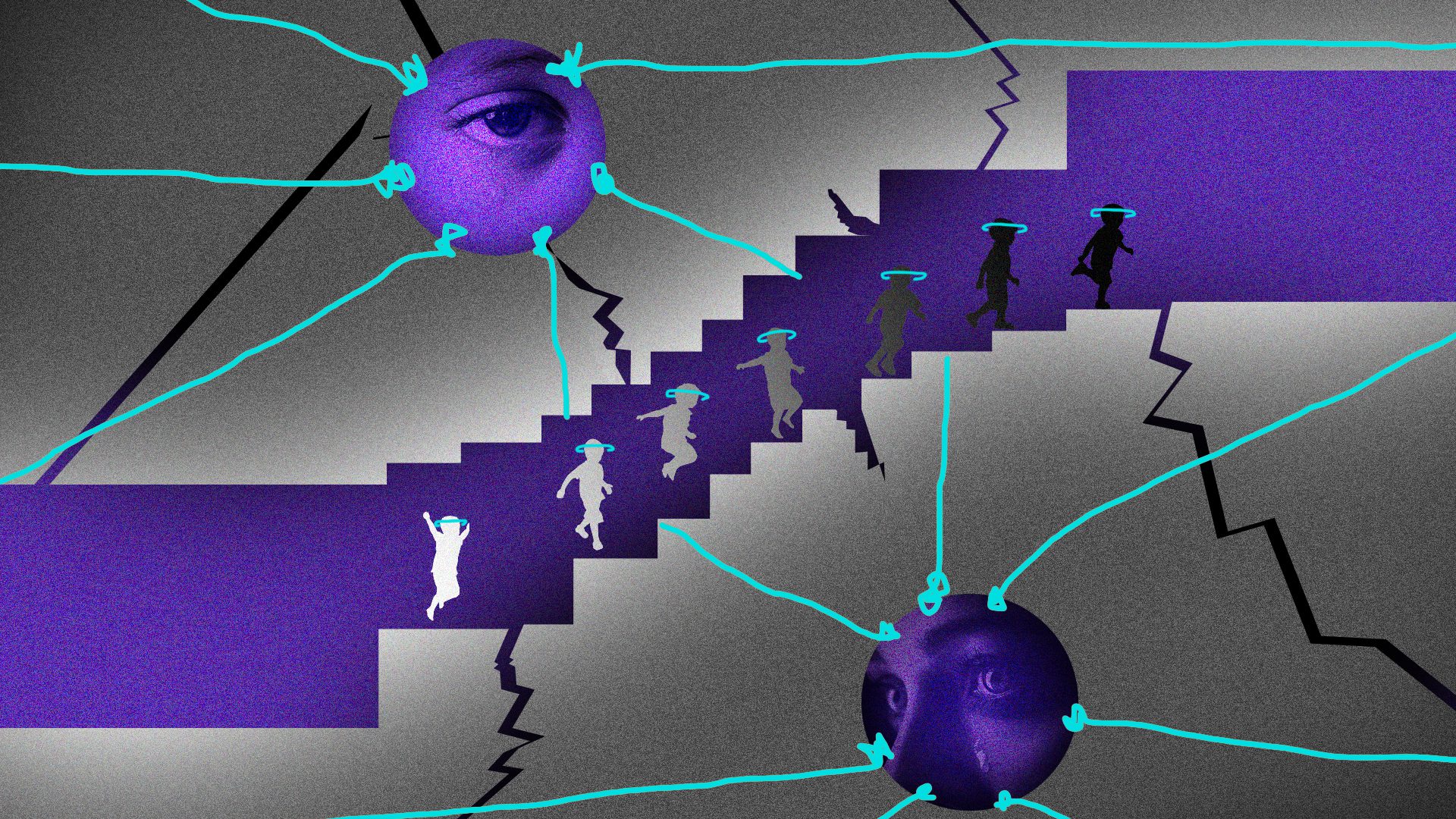
“Everyone has a Right to the Kids Except their Mother”: On Women Fighting for the Custody of Their Children
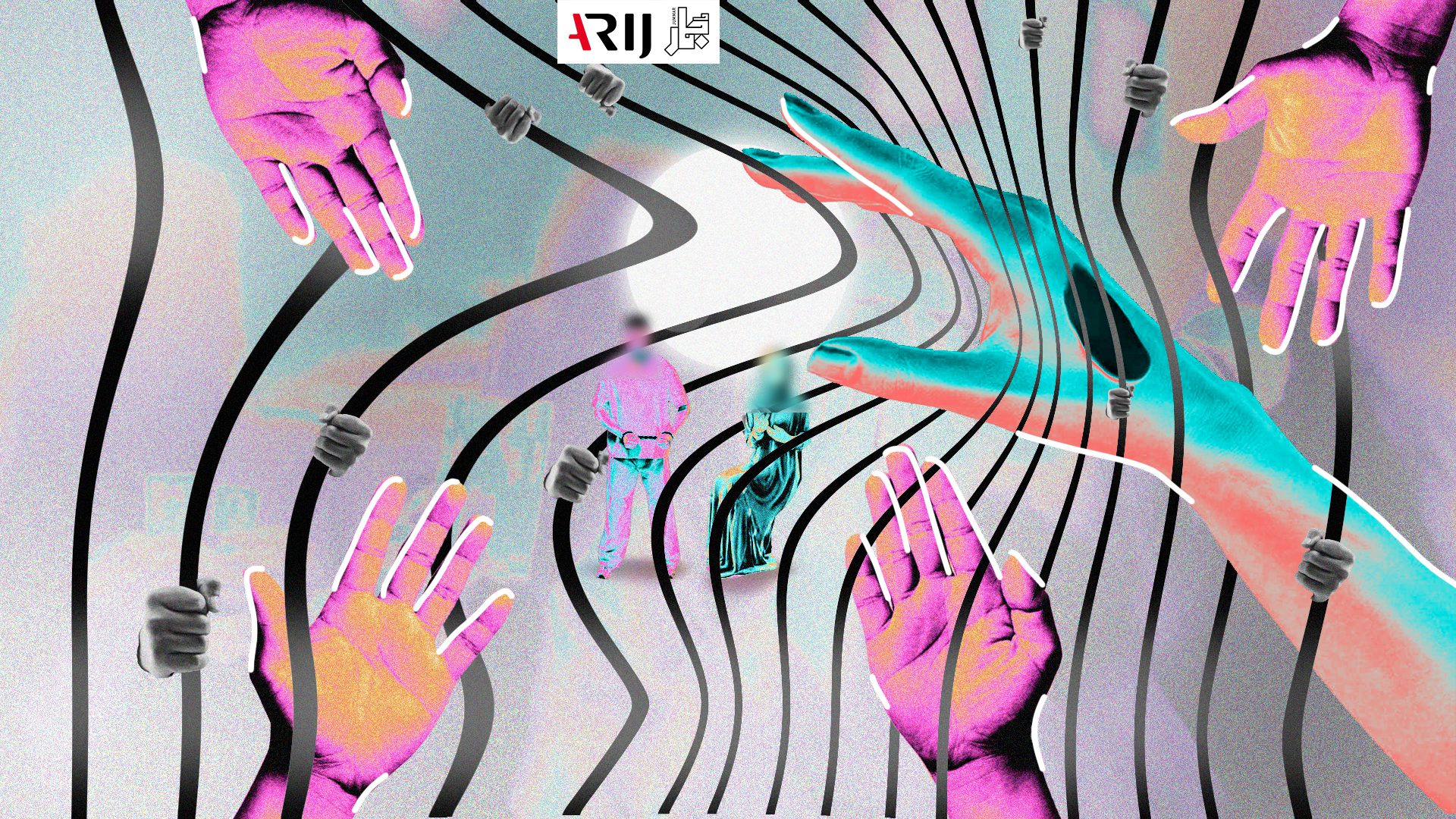
Iraqi Prisoners Blackmailed to Pay To Obtain Release Papers After Completing Their Sentence

“We Have to Make a Living Somehow”: Women Working Hard under the Heat of Dhi Qar
On the morning of 18 December 2022, a convoy of twelve trucks lined up in an unusual scene in front of the Medico-Legal Directorate building in the largest medical city in Baghdad. Portable refrigerators under maximum security and dozens of health, judicial, security, and press staff gathered to transfer a very large load of seized narcotics, which had been accumulating for twelve years, to crude incinerators in Nahrawan next to the Bismayah housing complex.
Most institutions involved in incinerating the drugs, including the Ministry of Health, confirmed that the process was carried out according to the most accurate scientific and technical specifications. However, the scene at the site was full of thick black fumes from the irregular burning pits that could not accommodate so many tons of drugs. The Ministry of Health was not part of this polluting incineration.
The trucks that set off from the centre to the far south of Baghdad in Nahrawan took hours to transport about six tons of confiscated narcotics to the Iraqi army’s shooting field inside the Bismayah military barracks. The photos and videos circulated by government agencies to document the “historic incineration” contained evidence of the inaccuracy of its procedures and revealed violations of safety protocols, in addition to minors participating in the transport and unloading processes, whom Jummar could not identify.
Drugs kept for years
Within the Medical City complex, tons of narcotic drugs confiscated by the security services since 2009 were stored in the Medico-Legal Directorate warehouses. Tons of unprotected drugs were placed in dilapidated storage facilities under precarious control.
The Ministry of Health’s Medico-Legal Directorate is the only government agency responsible for preserving, storing, and destroying narcotic drugs that are seized throughout the country. Due to the active drug trade in Iraq, including marketing and smuggling, the storage capacities of the directorate, which also function as a morgue, could not accommodate the accumulated impounded illegal drugs. As a result, it had to use its old laboratory building as storage. “The building is not suitable and lacks adequate means of protection from the hazardous seized materials”, according to a report by the Federal Audit Bureau, the highest national oversight institution that ensures work safety and financial and administrative stability in state structures.
Over three years (2014-2017), the Bureau monitored the Ministry of Health policy on drug control and addiction treatment. It found a significant shortcoming in various ministry departments that led to an increase in the spread of drugs. Security services have intensified their operations against drug dealers and users over the past two years, arresting hundreds from the trafficking network. However, major drug traffickers and heads of the network remain undetectable as if they were ghosts.
Judge Suhaib Dahham, Head of the Drug Destruction Committee and President of Al-Rusafa Court of Appeal, criticised the use of the laboratory building for storage. He said, “the building is old, dilapidated, and has been crumbling since 1941. It is unfit for storing hazardous materials such as drugs”.
Because most of the seized narcotics are considered dual-use drugs, preserving them requires the established standards of pharmaceutical storage. However, “the rooms in which narcotics were stored are dire, shambolic, unprotected, and without ventilation”, according to Mostafa Al-Hiti, Head of the Pharmacists Syndicate.
The Medico-Legal Directorate only has two small, fortified rooms in its main building for storing hazardous materials. “The storage facilities are not secured as there are not many guards to oversee them. Their doors are not secure, and their walls are high with ceilings made of iron sheets”, said an employee in the directorate who chose not to reveal his name.
As storage facilities were not sufficiently secured, questions were raised about the possibility of narcotics being smuggled from there back into the drug market. Colonel Bilal Sobhy, Media Officer of the Counter-Narcotics Directorate at the Ministry of Interior, denied this. “Nothing has been reported about smuggling or diversion of seized narcotics”, he said.
Either way, The Medico-Legal Directorate is responsible for the security of the stored materials. “Seized drugs are accurately weighed by electronic scales under the supervision of the investigating judge. They are then sent to the Medico-Legal Directorate and not the Ministry of Interior”, according to the Counter-Narcotics Directorate.
In keeping with the Narcotic Drugs and Psychotropic Substances Law, a specialised committee exists to “monitor and supervise the seizure, preservation, storage, and destruction of narcotic drugs, psychotropic substances, and chemical precursors that have been confiscated”. This committee comprises a first-class judicial magistrate and representatives of the General Secretariat of the Council of Ministries, the Ministry of Interior, the Ministry of Finance, the Directorate General of Customs, the Ministry of Health, and the General National Narcotics Control Commission.
Medico-Legal incinerator
The Medico-Legal Directorate owns a single incinerator with a capacity of 640 kilograms/hour, but it is old having been built in 1980 and uses fuel oil for operation. Thus, workers have to place narcotics into it manually. Therefore, its stacks emit toxic pollutants into the Medical City’s air – Iraq’s biggest medical complex- spreading through the crowded capital and into the sky.
The Narcotic Drugs and Psychotropic Substances Law enacted in 2017 requires that the Medico-Legal Directorate burn narcotics to destroy them effectively. However, the amount burned by the old, low-capacity incinerator used to get smaller each time. An official in the Medico-Legal Directorate who chose not to give his name told Jummar, “The incinerator cannot keep up with the large accumulated drug seizures”.
The incinerator’s efficiency, described as “unfit” by the Adviser of the Ministry of Health, Imad Abdul-Razzaq, has resulted in piles of drugs accumulating over the years. This is due to the lack of storage facilities with technical specifications corresponding to the World Health Organisation’s protocols, as well as rules governing the destruction process, under the bureaucracy of a government that did not comprehend the danger of “keeping” six tons of drugs. “We would need 200 years to destroy this amount if we used the Medico-Legal incinerator”, said Al-Hiti.
The Supreme Judicial Council proposed a fast-track destruction mechanism that would shorten judicial procedures in relation to the Medico-Legal incinerator if a court order was issued in order to avoid accumulation. “Every seized narcotic substance …, which is a variety of substances from multiple sources and are not limited to a specific governorate, is subject to a series of procedures that end with issuing the Medico-Legal report to prove that it is a narcotic substance (…) The Narcotic Law stipulates that it must be stored in the Medico-Legal Directorate, resulting in this accumulation”, explained Judge Dahham.
From accumulation to incineration
Both health and judicial officials repeatedly made statements about the size of the destroyed amount, stating that it’s “5.9 tons of narcotics without indicating their type, and sixty-one million narcotic pills, including five million Captagon pills, thirty-one thousand ampoules, nine thousand vials of dual-use drugs such as psychotropic substances, and 350 kilograms of Cocaine”. These seizures resulted in more than 15,000 lawsuits.
The process of loading, transporting, and unloading the drugs “took around eight hours, starting at mid-morning”, according to Judge Dahham, who confirmed that “the destruction process ended at five o’clock in the afternoon”. The operation of transporting, unloading, burning, and burying, however, took only five to six hours for the six tons of narcotics.
Samia Al-Naimi, an academic in Biotechnology at Al-Nahrain University, confirmed that “the burning process usually requires six to fifteen hours, depending on the type of narcotic substance”, which makes the government’s narrative questionable.
After analysing the video footage and photographic evidence obtained by Jummar and conducting mathematical calculations, the amount destroyed appeared to be sizably less than the official figures announced. Officials exaggerated the “historic achievement”, with the state TV channel devoting special coverage to the event.
Seven pits were used to destroy and bury the alleged “tons” without signs explaining the nature of those pits or indicating the danger of approaching or excavating them. Saif Al-Badr, the Ministry of Health spokesman, stressed that “technical specialists agreed on this site to be used for burning”. Selecting the site was on the recommendation of the technical department of the Ministry of Health with the agreement of the Supreme National Narcotics Control Commission and the approval of the Ministry of Defence. However, the Ministry of Environment was not consulted, despite it being the environmental reference to guarantee the safety of destruction procedures and any resulting damage.
Technical irregularities and environmental offences
According to the Ministry of Health, destroying drugs through burning in an open space does not harm the population’s health. Al-Hiti, Head of the Pharmacists Syndicate and one of the technical specialists consulted, supported the ministry’s claims, saying that “burning drugs is the correct method that does not have detrimental effects” and that the government’s decision was based on “our experiment in burning smaller samples first, which came out to be completely destroyed after examination”.
The Ministry of Health spokesman, Al-Badr, stressed that the narcotics burned in the open shooting field “were processed with chemicals to neutralise their effectiveness before the burning process”; therefore, “there is no risk from the emitted fumes”.
However, the photos and videos documenting the event showed that the destruction process did not include the neutralising of the narcotics with any chemicals before burning. The narcotics were piled in shallow pits and covered with highly flammable fuel, just like waste”.
The Pharmacists Syndicate Head defended the burning process, “it is unnecessary to follow the international protocol, which might cause more harm. Necessity is the mother of invention, and we had to do it this way”.
The government described the operation as “exemplary” and meticulously planned. However, field evidence indicated that it was improvised without planning, and pits were hastily dug when the trucks arrived and at a close distance to each other. Contrary to the standards stipulating that pits must be excavated like deep grooves with ventilation paths to allow oxygen access necessary to complete the burning process sufficiently, the excavation was random, and its depth was insufficient.
The Pharmacists Syndicate Head assured, “the burning process did not occur in one place, but in several places excavated accurately and at considerable distances, which confirms 100 percent that the destruction process was orderly and did not affect nearby areas”, he added.
Minors carrying drugs
While loading the narcotics, photos were circulated by the government showing two minors were involved in transporting the hazardous substances. Jummar could not independently identify them, but they also accompanied the convoy to the destruction site and participated in the burning process without being subjected to safety and security conditions, despite official instructions and international protocols prohibiting the participation of minors in such work.
One of the minors appeared in a separate video unloading narcotics into the burning pit in front of health and judicial officials. It seemed that no one opposed the presence of the minors.
Possible damage
Samia Al-Naimi, a Biotechnologist at Al-Nahrain University, warns of dangers of the conventional method used by the government in burning drugs, “The method is not correct. It is better it is done in electric incinerators and furnaces with high specifications and purifying filters to reduce the spread of toxic gases and emissions from the burning”. She adds, “it must be done in specific sites and within strict environmental parameters (…) This is how developed countries destroy drugs”.
Al-Naimi stresses that “the burning process must take from six to fifteen hours, depending on the type of narcotics”, in carefully prepared burning pits that are “deep and distant from the urban areas so they are not affected by toxic and dangerous fumes and gases that pollute the environment and contain health determinants that affect humans”. She stipulates that the burning process must “reach more than a thousand degrees celsius until the narcotics melt completely and thus disintegrate. Then the pits must be filled properly, and away from areas which will be subjected to future excavation, erosion, and bulldozing”.
Destroying drugs in the Bismayah camp has resulted in damage as a consequence of not complying with the minimum technical conditions of open incineration, as Al-Naimi pointed out. Her view was seconded by Haidar Moataz, a Researcher in Nanobiological Studies and Environmental Viruses at the Ministry of Oil.
“Burning tons of drugs in one day has a significant environmental impact, as it forms a black cloud of smoke that spreads with the wind and causes high air pollution, depending on the type of the drug destroyed. This toxic cloud can travel long distances depending on the speed of the wind on the day of burning”, Moataz explains.
The photos and videos showed that the burning pits were not filled according to technical specifications that guarantee soil safety and avoid future bulldozing and erosion due to weather conditions. Burying drug incineration residues near the earth’s surface causes “great future environmental problems that affect life in the surrounding region (…) The burning impact must be cleaned, and the site’s safety must be constantly ensured as it is a highly polluted area”, according to Moataz.
